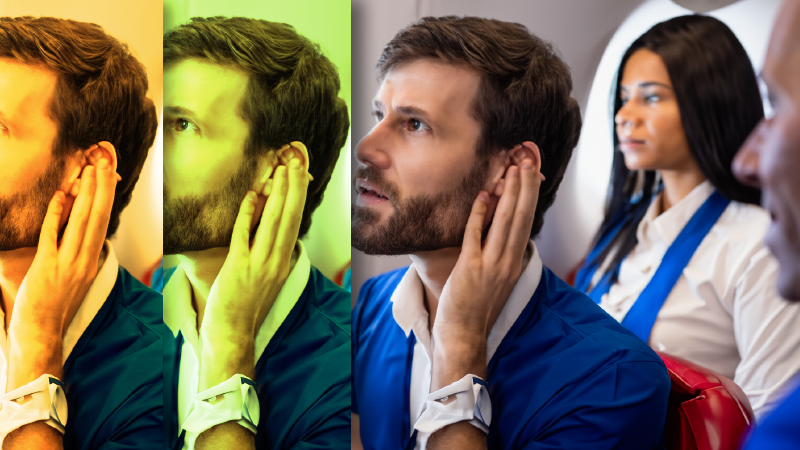Air travel and hearing aids are an odd couple. Because there is a lot more going on in an airport or a jet, it can take some getting used to.
If you’re a hearing aid wearer – especially a new one – and planning on flying anywhere this summer, you no doubt will encounter some communication issues or some other sort of bumpy right either at the airport or on-board your flight.
ConsumerAffairs thought it might be helpful if we could find some tips you could use to make your experience the best it can be. Hearing aid expert Dr. Jenn Schumacher from ReSound says the beef she hears the most is that hearing aid wearers can find it difficult to focus on an individual voice, which is vital for many airport activities like checking in and security screening.
One way around that at the airport comes from bluetooth technology that allows for things like announcements to go directly into your hearing aids.
“If you have hearing aids using Bluetooth Low Energy Audio, over the next coming months, you can look forward to using Auracast which will allow you to stream public announcements directly into your hearing aids from anywhere inside the airport,” Schumacher suggested.
You can also sign up for text notifications through the airline’s mobile app to receive status updates which lets your eyes do the work when your ears can’t.
Communicating with the flight crew
It is difficult for passengers on airplanes to hear well, even if they don’t have hearing loss. But, for those who wear hearing aids, it can be doubly stressful – especially communicating your needs with the crew before the flight
“To minimize stress, you can request pre-boarding at the gate so you have time to settle in your seat and talk to the flight attendants. If you carry a ‘hearing impaired’ card (such as these), you can also give it to a crew member so they can communicate with you as necessary,” Schumacher said. “Also, if you use a remote microphone with your hearing aids, you could ask the flight attendant to speak directly into it, in order to overcome the loud noise in the aircraft.”
One interesting thing that Schumacher notes is that when flight attendants ask everyone to turn off electronic devices, this does not apply to hearing aids, as they do not interfere with plane navigation or communication systems.
Air pressure changes
Taking off and landing can cause a lot of discomfort for everyone, regardless of whether they wear hearing aids. In some cases, these pressure changes can cause pain or a popping sensation in the ears.
However, as the cabin pressure on the plane stabilizes, these discomforts will often go away on their own. If you have in-the-ear hearing aids and the pressure feels too much to bear, you can remove them during takeoff and landing, ensuring to put them back on while the plane is cruising.
Schumacher’s suggestion here is to do things like chew gum or eat hard candy to open the Eustachian tubes, this relieves pressure in your ears. You may also opt for earplugs that help to equalize air pressure, but these can only be used when you aren’t wearing hearing aids.
In-flight entertainment
Things have really changed with in-flight entertainment systems. Many airlines have done away with those two-prong headphone jacks and others have converted their entertainment modules to be bluetooth-ready. For hearing aid wearers, that’s another plus, Schumacher said.
Airlines are still working on making in-flight entertainment more accessible to people flying with hearing aids. For instance, there are still many movies and TV shows on airplanes that don’t have closed captioning available.
There are a couple of ways to make sure you’re covered all the way around in regards to connecting to in-flight modules. Just in case the airline you’re flying on still has the old-school two-prong headphone jacks, you can buy these adapters.
Then, as Schumacher noted, there are devices like her company’s ReSound Multi Mic that can be plugged directly into the in-flight system to stream audio right into hearing aids. Or there are also bluetooth adapters especially designed for in-flight systems. Some examples can be found here.
Take it from a traveler!
If you’re interested in more advice about hearing aids, why not get some directly from a hearing aid wearer? In this video, Laurie (Travel Tips by Laurie) offers some extra ways to help you feel more confident with flying. She covers everything from packing tips to hints for airport security.

